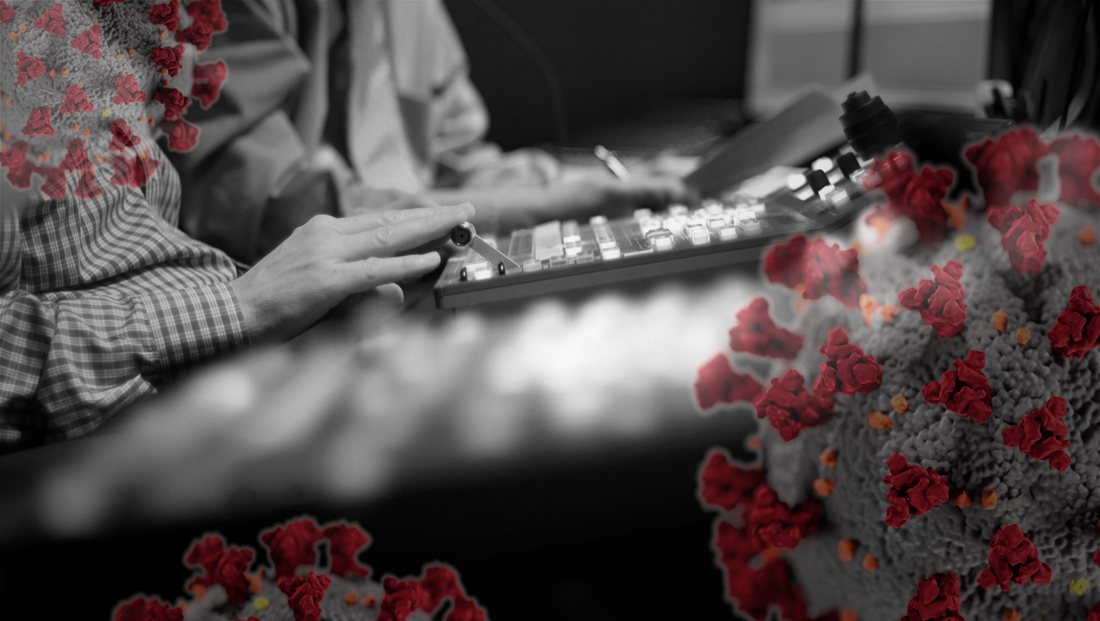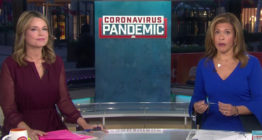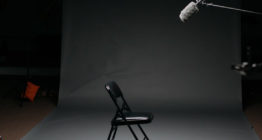How to keep coronavirus from spreading around your station

Subscribe to NCS for the latest news, project case studies and product announcements in broadcast technology, creative design and engineering delivered to your inbox.
As coronavirus continues to be top of everyone’s minds, TV stations and networks are already implementing “social distancing” both on camera and behind the scenes.
Like everyone’s been hearing for weeks, regular hand washing in the workplace is likely a good defense to get into the habit of doing — so remind staffers to do that regularly using the standard guidelines on using soap, length of washing and turning off the faucet and opening the door with a paper towel.
No, it's not your imagination, anchors are sitting farther apart https://t.co/m0RUZB65HC
— NewscastStudio (@newscaststudio) March 16, 2020
Below is a list of more specific suggestions to consider when implementing this type of plan at your station or workplace.
Keep in mind that these suggestions should not be used in place of advice issued by federal, state or local officials or medical experts and that each station, manager and staffer should make decisions based on their individual situation and particulars.
Around the station
- A good strategy, in general, is to spread out operations across multiple facilities or locations if possible to avoid having larger groups of people gathering. For example, satellite bureaus can be a good option for “split anchoring” or reporting.
- A recent trend has been for TV stations to move into industrial parks, mid or high rise buildings or even strip malls. If there’s vacant space nearby, consider seeing if you can rent some extra space on a short term basis from the landlord to spread out operations more — just be sure to restrict or prohibit movement between areas to avoid the potential spread of germs. If the space is close enough to your primary offices, you might even be able to run data, video and audio connections.
- Where possible, prop doors open to prevent people from having to touch knobs or handles. Obviously exterior doors or interior doors that require secure access likely shouldn’t be left open; there may also be HVAC considerations that mean certain doors shouldn’t be left open in order to maintain required climate control or air exchange or pressure flows.
- If you have a secondary control room or backup control room, consider closing it, cleaning it and avoiding using it at all and keeping it as a backup for if an infection hits the station. This includes any former master control or video operations centers that are retrofitted as a backup control room.
- Remind staffers to practice “social distancing” whenever possible, including outside the station, entering or leaving the building as well as inside.
- Consider restricting what areas of the station staffers can access either with access control technology or policies or advice encouraging people not to walk around the building unless it’s necessary.
- Encourage the use of instant messaging or phone calls instead of getting up and talking to someone directly, even if they are not far away.
- Where possible provide access to soap, hand sanitizer, wipes and other cleaning supplies, but be sure people are aware of what supplies can be safely used on equipment, hands and other surfaces.
- Consider closing down your lunch room, canteen or employee lounge as well as any public coffee or beverage stations, microwaves and refrigerators. At the very least, step up cleaning in these areas.
- If you’re providing food to staffers, be sure to remind employees not to crowd around the food when it comes and that they should take any item they touch. Encourage them to move quickly when selecting what food to take. Better yet, order individual prepackaged meals or snacks that are wrapped.
- Encourage staffers to label mugs, cups and canned beverages clearly with their name (any of these items left out without a label should be disposed of or sanitized).
Administrative, editorial and newsroom staffers
- If staffers can work from home and login into your editorial system remotely, this is likely the best option (it also may help out those with kids out of school and day care).
- For staffers who need to be in the building, consider staggering placement throughout the newsroom or other areas so people are at least six feet apart.
- If possible, also limit access to any high touch surfaces such as routers, telephones or intercom systems to only one person per shift and sanitize in between.
- If your phone system allows, consider forwarding shared lines that ring to phones that multiple people touch (such as at the assignment desk) to cell phones even for people in the building (this is also a good idea for staffers working from home). Alternatively, you may be able to have these lines ring to desk phones. Some phone systems even let you set up “round robin” rotations on general incoming lines.
- Don’t cram into the conference room for daily rundown meetings or other meetings — instead consider moving into a space large enough for people to spread out.
- If staffers are working from home and you’re already using video conferencing to connect with some of them, consider having those in the building join the call from their workstation via the same technology rather than gathering in a single location.
#TelemundoChicago anchors sitting V E R Y F A R apart https://t.co/U3NBYAOUbX pic.twitter.com/611ibRkAp9
— NewscastStudio (@newscaststudio) March 17, 2020
For talent
- Consider shared equipment such as mics and audio transmitter packs, IFBs, printers, tablets, remote controls for WX computers or other devices and sanitize them regularly where possible or restrict who can use which ones. If possible, assign everyone a specific device and clearly label it with his or her name or set up a rotation that allows time for someone to clean them.
- Advise talent to only touch the paper when grabbing scripts from the printer — and not touch surfaces around it.
- Remove any shared mirrors, pens or other items from behind the anchor desk. Give each talent a plastic bin or container to keep these items in and have them bring it on set with them and take it back to their desk or office (crew members shouldn’t touch them if possible).
- Consider closing the hair and makeup room or increasing sanitation in it. If possible, use other rooms in the building for hair and makeup, with each talent assigned a specific area that’s at least six feet from another person’s. Or, encourage talent to do most hair and makeup at home or at their desks if possible.
- Consider removing any arms from anchor chairs or rotating anchor chairs in and out to allow them to be cleaned more often.
- Avoid travel and crowded places wherever possible. If necessary, consider the suggestions below for adding more reporting venues that don’t require leaving the building. It’s generally not a good idea to send reporters or crews into hospitals or other high traffic places.
- Some stations have started having weather, sports and traffic reporters or anchors (or any combination) work from home since these are jobs that can generally be done remotely. There’s also been less focus on these areas with more coronavirus reporting.
- When in public, have reporters follow CDC guidelines for using face masks both on camera and off camera. Keep in mind, however, how face masks can affect audio. Also consider whether or not wearing medical or quasi-medical grade masks on air could lead to the incorrect impression that these should be purchased by the general public. That said, the health and safety of your team should always be first — so follow professional medical and government advice as appropriate (if a reporter is wearing a medical grade mask on air, it might be worth having them mention why, at least in a general sense).
Remote calls
- Double check that you have compatible devices and staffers are familiar with how to access FaceTime, Facebook Messenger video, Google Duo, Skype, Zoom, Google Meet and other popular videoconferencing solutions.
- Your team should be also know how to record and insert these calls live into newscasts or social media streams.
- Being prepared to take feeds from a variety of platforms could be important since guests and reporters joining remotely may not have the technical know how to switch to your preferred video platform.
- There’s also the possibility that one service could become overloaded or have other technical issues so having alternatives is a wise move.
- For live remote video call appearances, it can be wise to have a “backup” graphic ready in case a call’s video quality diminishes or drops out (often with these solutions audio is more reliable). This could be a “phoner” style graphic or just a generic coronavirus branded image.
- Also be prepared to take audio only calls either video these services or old fashioned landlines with phoner graphics, B-roll and other visuals ready to go.
Crew
- Limit the number of people who are touching control room switchers, audio boards, robotic camera controls or other shared workstations or equipment. Of course, use care when cleaning this type of equipment and check with manufacturer guidelines.
- Consider leaving lighting, video walls or monitors on for longer periods to reduce touching of switches or control panels — this could also be helpful for breaking news situations. Of course, you’ll want to check that all your gear is properly rated for being left on for extended periods of time and also check if, when not in active use, what you should be feeding to them.
- Protective gloves can be a good precaution — but they’re probably not a replacement for other sanitation. It’s also worth noting that these can still pass germs from place to place if someone touches a contaminated surface.
- If you run cameras manually, remember to clean off sticks, zoom and focus controls, intercom headsets and other high touch points regularly.
- If possible, “lock” cameras down including using wider shots that are more forgiving, so you can reduce or eliminate the need for camera operators.
- Cut back on the amount of crew members in studio — and any that are in it should remain at least six feet apart.
- Stations with automation or robotic cameras could also run newscasts with no one in the studio except talent.
- Stations that already use “one man bands” or “multimedia journalists” are already fairly well set up for this type of situation — and other stations may want to consider looking to these practices for field crews.
- Keep in mind that if your stations uses automation, you’ll want to test out any new camera and audio setups needed under the new configurations.
On set
- Sit anchors farther apart on set if possible — at least six feet if possible.
- “Split anchor” shows from different areas of the studio — such as one anchor behind the anchor desk and one in a standup or multipurpose area.
- Another good option is to put one anchor in front of the chroma key wall with a branded or “virtual set” graphic keyed in.
- If you have the ability, you can also have one anchor in studio and one at a flash cam or alternate anchor position if possible.
- Eliminate cross talk and toss segments that require talent to be closer together.
- It’s worth noting that, as a public information resource, it could be more effective to keep anchors on set but placed noticeably farther apart to reinforce the idea to viewers — but ultimately that’s a decision for you and your talent.
- If you do decide to split anchor, you could consider showcasing a wide shot of the studio showing the talent in different areas as a way to both explain why they aren’t sitting next to each other and reinforce the concept of social distancing.
- Other, perhaps more drastic, options include building a new anchor desk that lets talent sit farther apart like “The View” did.
Alternative reporting venues
- If needed, you could also consider setting up additional semi-permanent flash cams position in other areas around the station.
- When considering whether to use new or existing locations in the building as alternative flash cam positions, keep in mind that putting talent in a crowded control room, for example, probably isn’t the best idea.
- Assuming you have the technical capabilities to do so, you may be able to use offices, conference rooms or other rooms in the station as reporting locations. If these locations have TV monitors or computer terminals already, these could be used to display your station logo or even topical graphics if that’s possible.
- Consider having large photos of your set or branded graphics printed up that can be used as temporary backgrounds behind alternate reporting venues as needed.
- Alternatively, prepare digital backgrounds on USB or other “streaming sticks” that can be easily loaded into monitors and used as instant backgrounds.
Savannah Guthrie anchoring ‘Today’ from her basement after ‘mild sore throat’ crops up https://t.co/G5ZeNNtRVG #TVNews #BroadcastNews
— TVNewsMix (@TVNewsMix) March 18, 2020
- If things get really bad, today’s video streaming and conferencing technology
couldmake it possible for talent to anchor from home (talent could take home those printed backgrounds or sit in front of their TVs displaying a backdrop). Many networks are also using this approach for contributors and NBC’s Al Roker delivered the weather from his kitchen March 17, 2020 — and Savannah Guthrie is doing it March 18.
Contingency plans
- Review your emergency protocol plans and update and expand as necessary for any possible scenario.
- Work closely with any sister or group stations to discuss how programming could originate from their studios or technical facilities if needed.
- Keep in mind it may be necessary to close your facility except for minimal staff and talent.
- Although hopefully it won’t come to this, it’s worth at least considering how you would handle situations where the building needs to be completely closed.
Staff levels
- If possible, keep paying all staff, including hourly crew members.
- If other precautions preclude the need for, say, camera operators, consider having them help out in other areas and still get paid. For example, they could help out with web content, live shots or other tasks with, in many cases, minimal training.
Subscribe to NCS for the latest news, project case studies and product announcements in broadcast technology, creative design and engineering delivered to your inbox.






tags
Coronavirus
categories
Broadcast Industry News, Featured